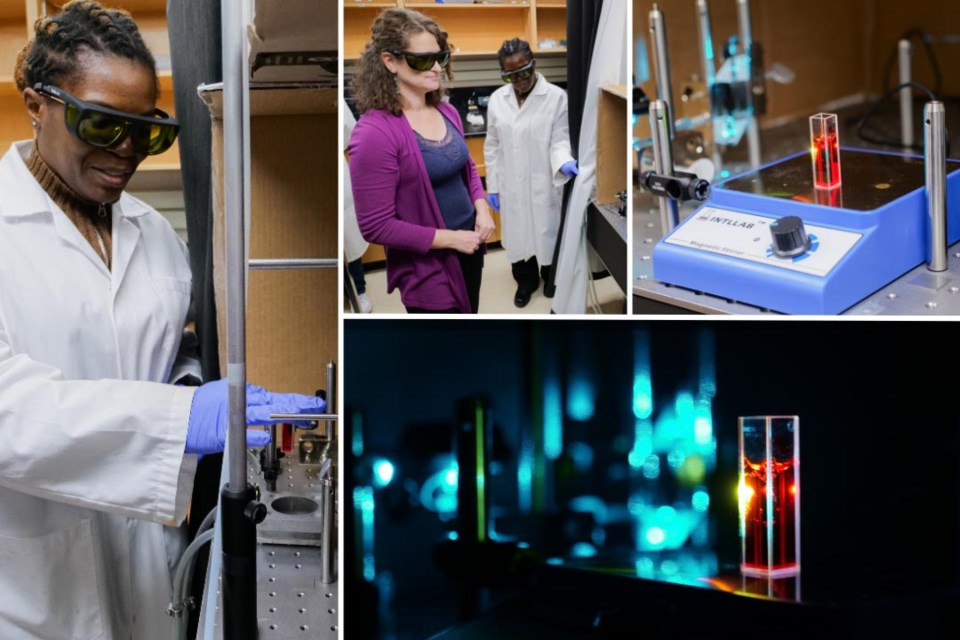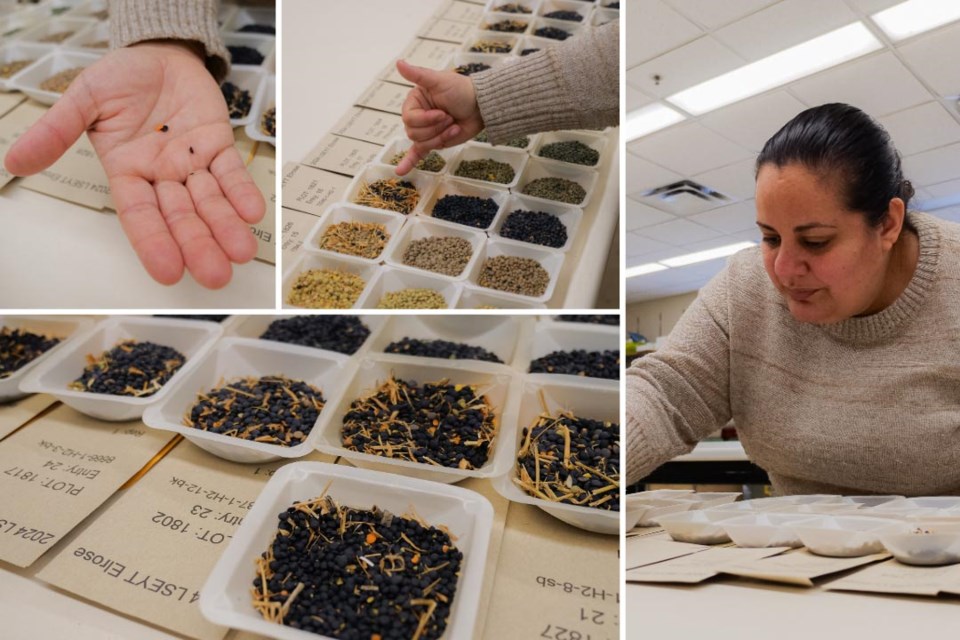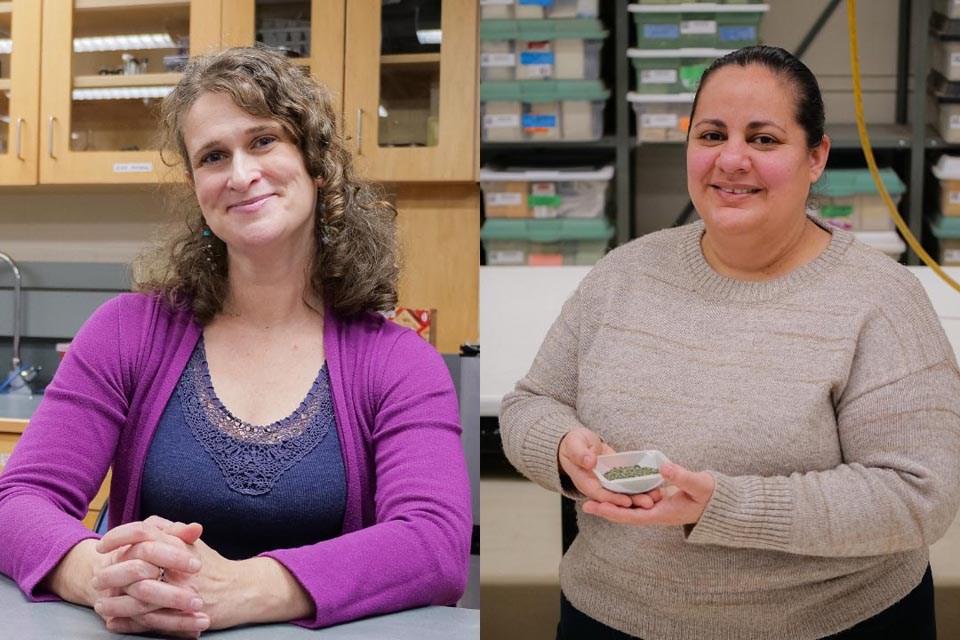SASKATOON — The International Day of Women and Girls in Science was celebrated annually on Feb.11 and promotes gender equality in STEM (Science, Technology, Engineering and Math). For this year, the University of Saskatchewan (USask) is celebrating researchers who are making great advancements in their field and forging a path for the next generation of scientists.

Dr. Tara Kahan (PhD) (top left) works in her lab with PhD student Aiminayanate Pepple (top centre) and Master's student Amanda Ferrer (right). | Photos mby Matt Olson, Research Profile and Impact
Shining a light on air quality
Tucked away in a nondescript corner of USask’s iconic chemistry building, one lab is tackling big challenges in the world of environmental and atmospheric chemistry. Here, Dr. Tara Kahan (PhD)— professor and Canada Research Chair (CRC) in Environmental Analytical Chemistry—and her graduate students gather at the entrance, donning personal protective equipment before they get to work.
Kahan and her team are investigating what reactions occur indoors when we introduce different chemicals and molecules into the air, from cleaning products to cigarette smoke and mould.
“People spend more than 90 per cent of their lives indoors, so the quality of air is very important but there isn’t a lot of research on indoor air quality,” said Kahan. “In our lab, we build instruments to monitor what is happening inside homes and other buildings.”
Another area of interest for Kahan and her students is ‘urban grime’—the molecules and particles that make up the grit and residues that stick to our buildings and roadways. In the basement of the Chemistry Building, they shine a light on a variety of samples to assess how they respond under different conditions.

PhD student Hilda Ehiwario (top left) sets up a laser experiment display under the watch of Dr. Tara Kahan (PhD) (centre left). Photos by Matt Olson / Research Profile and Impact
“We use lasers to see how molecules behave on the surfaces. This gives us insight into what they do in the environment which helps us when it comes to things like policy, remediation or monitoring certain pollutants,” said Kahan.
Kahan is a big believer of fostering supportive environments and offers support to everyone who enters her lab, ensuring that it’s a place where her students can achieve success. As a woman in chemistry, Kahan said there are still challenges for women starting out in science but supporting one another goes a long way.
“It’s amazing when women have peers and mentors who will support them and advocate for them. I think it really helps to encourage them to pursue and thrive in jobs in science and academia,” said Kahan.

Dr. Ana Vargas (PhD) sorts through a display of lentil varieties at USask's Crop Development Centre. | Photos by Matt Olson, Research Profile and Impact
In a bright room in the pulse wing of the Crop Science Field Laboratory, Dr. Ana Vargas (PhD) stands in front of a colourful array of lentils. Vargas is an assistant professor in the College of Agriculture and Bioresources and the Agri-Food Innovation Fund Chair for Lentil and Faba Bean. Since 2024, Vargas has been leading USask’s lentil and faba bean breeding program. Here she helps develop different varieties for producers all over the world.
“The lentils we have in front of us are from advanced generations that are close to going to the market,” said Vargas. “When looking at these lentils we compare different characteristics, assessing the colours, shape and quality of the seeds for different market classes. That quality assessment, alongside the agronomic data, helps us pick our winners.”
Growing up on a farm in Costa Rica, Vargas said that her love of agriculture and science started early.
“My family does coffee farming, we had goats and a variety of tropical fruits,” said Vargas. “Even though I didn’t know what plant breeding was at the time, I understood crops’ diversity and the challenges that growers face in the field every day.”

Dr. Ana Vargas (PhD) (top left) shows off the different coloration of lentil varieties with the help of senior technician Jaret Horner (bottom left). | Photos by Matt Olson, Research Profile and Impact
As a woman in science, Vargas said there have been challenges along the way, but she has a lot of fun doing her work and hopes to continue her research and breeding for decades to come. Vargas brings that passion for her research into the classroom, encouraging all students, and especially other women in science, to pursue what they love.
“Just follow your dreams, dream big and work hard for your dreams, because in the end you can do whatever you want,” said Vargas.




